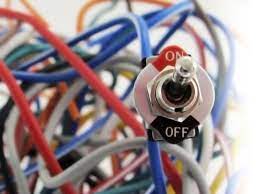Wire harness assembly manufacturing is a critical process in various industries, including automotive, aerospace, electronics, and telecommunications. These intricate systems are the backbone of many electronic and electrical devices, ensuring the seamless flow of power and data.

For extra info, wire harness assembly manufacturer
In this article, we will explore the fundamentals of wire harness assembly manufacturing, its importance, and the key steps involved.
Understanding Wire Harness Assembly Manufacturing
Wire harness assembly manufacturing is the process of creating a structured bundle of wires and cables, which are bound together using various materials such as tape, sleeves, or conduit. These harnesses are designed to organize and protect wires, making them suitable for a wide range of applications.
Importance of Wire Harness Assembly Manufacturing
Enhanced Reliability: Wire harnesses are crucial for enhancing the reliability and durability of electrical systems. By securing and protecting the wires and cables, harnesses reduce the risk of damage, wear, and interference, ensuring consistent performance.
Simplified Installation: Wire harnesses simplify the installation process, saving time and labor costs. They come pre-configured with connectors and labels, making it easier for technicians to connect and troubleshoot electrical components.

Improved Safety: Properly assembled wire harnesses improve safety by reducing the risk of electrical fires, short circuits, and accidents caused by exposed wires. They also protect against electromagnetic interference (EMI) and radio-frequency interference (RFI).
Key Steps in Wire Harness Assembly Manufacturing
Design and Planning: The process begins with careful planning and design. Engineers create a detailed blueprint that specifies the type and length of wires, connectors, and any additional components needed.
Wire Cutting and Stripping: Precise cutting and stripping of wires to the required lengths and specifications are critical. Automated machinery is often used for this step to ensure consistency.
Crimping and Termination: Connectors, terminals, and pins are attached to the stripped wires through crimping or soldering processes. This step is crucial to ensure reliable electrical connections.
Routing and Bundling: Wires are organized and bundled together according to the design specifications. They are typically secured using tape, sleeves, or conduit to maintain their integrity.
Testing and Quality Control: Rigorous testing is conducted to verify the functionality and integrity of the wire harness assembly. This includes continuity tests, insulation resistance tests, and visual inspections.
Labeling and Identification: Proper labeling and identification of wires and connectors are essential for easy installation and maintenance. Labels are added to each component for clear identification.
Final Inspection and Packaging: A final inspection is performed to ensure that all components meet quality standards. Once approved, the wire harnesses are carefully packaged and prepared for shipment.

Conclusion
Wire harness assembly manufacturing is a critical process that significantly contributes to the reliability and functionality of various electronic and electrical systems. Understanding the importance of this process and the key steps involved is essential for ensuring the success of projects in industries that rely on wire harnesses.

No comments yet